Plotting Output#
Command line#
Running the following from the command line will plot the variable
significant wave height from the WAVEWATCH III at_4m grid. Note that the time of
day (in this case, 15:00) is separated from the date with a T (i.e. times can be
given as YYYY-MM-DDTHH)
ww3 plot --grid=at_4m --data-var=swh "2010-09-15T15"


Python#
This example is similar to the previous but uses the bmi_wavewatch3 Python interface.
>>> from bmi_wavewatch3 import WaveWatch3
>>> ww3 = WaveWatch3("2009-11-08")
The data can be accessed as an xarray Dataset through the data attribute.
>>> ww3.data
<xarray.Dataset>
Dimensions: (step: 241, latitude: 311, longitude: 720)
Coordinates:
time datetime64[ns] 2009-11-01
* step (step) timedelta64[ns] 0 days 00:00:00 ... 30 days 00:00:00
surface float64 1.0
* latitude (latitude) float64 77.5 77.0 76.5 76.0 ... -76.5 -77.0 -77.5
* longitude (longitude) float64 0.0 0.5 1.0 1.5 ... 358.0 358.5 359.0 359.5
valid_time (step) datetime64[ns] dask.array<chunksize=(241,), meta=np.ndarray>
Data variables:
dirpw (step, latitude, longitude) float32 dask.array<chunksize=(241, 311, 720), meta=np.ndarray>
perpw (step, latitude, longitude) float32 dask.array<chunksize=(241, 311, 720), meta=np.ndarray>
swh (step, latitude, longitude) float32 dask.array<chunksize=(241, 311, 720), meta=np.ndarray>
u (step, latitude, longitude) float32 dask.array<chunksize=(241, 311, 720), meta=np.ndarray>
v (step, latitude, longitude) float32 dask.array<chunksize=(241, 311, 720), meta=np.ndarray>
Attributes:
GRIB_edition: 2
GRIB_centre: kwbc
GRIB_centreDescription: US National Weather Service - NCEP
GRIB_subCentre: 0
Conventions: CF-1.7
institution: US National Weather Service - NCEP
history: 2022-06-08T16:08 GRIB to CDM+CF via cfgrib-0.9.1...
The step attribute points to the current time slice into the data (i.e number of
three hour increments since the start of the month),
>>> ww3.step
56
>>> ww3.data.swh[ww3.step, :, :].plot()

